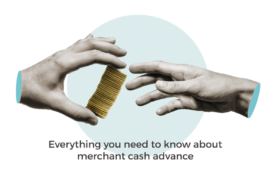Interest rates stand at the intersection of politics, economics, and finance. They are one of the most important pillars that hold economic systems together. Interest rates influence the return on investments, savings, and the cost of borrowing. They also give an insight into future economic prospects and market activity.
However, for you to understand interest rates and their impact on the credit market, you need to first look at the different types of interest rates available out there and their dynamics.
What Are Interest Rates?
It may sound so basic but having a clear understanding of what interest rates are, goes a long way into helping you figure out all other dynamics of this important concept. When you borrow money from a lender or creditor, they will charge you an extra amount on top of the principal. That extra fee often expressed as a percentage, is the interest rate or the cost of borrowing money.
Assuming you are shopping for fast loans without guarantor either through a credit broker or directly in the market, one of the most important numbers is the interest rate charged. Different lenders charge different rates and knowing how to compare them will determine the kind of deal you’ll come out with.
What Are the Different Types of Interest Rates?
Slicing and dicing the interest rate landscape reveals different types of rates that creditors use to advance their facilities. Here are some of the interest rate regimes you may encounter in the market.
- Fixed rates -This form of interest is one of the most common as consumers find it easy to calculate and interpret. Both the lender and the borrower understand their obligations upfront with respect to the loan or credit being advanced. A 5% loan of £10,000 will see the borrower pay back interest of £500 on top of the £10,000. The rates are constant throughout the loan.
- Variable Interest- This is the opposite of fixed rates. The interest rates fluctuate hence the borrower may not know upfront how much they are going to pay for the loan. The movement of the variable interest rate is determined by the prime lending rate. When this rate declines due to factors such as poor economic performance, the variable rate also declines.
- Annual Percentage Rate (APR)- This is the annualised rate covering the total cost of the loan. On top of the interest rate, the APR includes other costs such as loan origination fees, closing costs and discount points. Most loans are priced using the APR as it makes it easy to compare loans apples for apples.
The Impact of Interest Rates on the Cost of Credit
Interest rates have such a huge impact on the overall cost of credit whether car loans, mortgages or personal loans. Here is a look at how interest rates affect credit markets.
Interest rates and Credit Card Debt
Interest rates have a direct impact on the cost of credit charged by card companies. The higher the interest rates, the bigger the monthly instalments you’ll have to pay. The interest on credit card debt is charged daily which means the APR must be divided by 365 to make it a daily rate.
Therefore, a 16% APR translates to a 0.044% daily rate. The daily rate is then multiplied by the average daily balance on your card statement to give you the interest payable. The higher the APR, the higher the cost of credit card debt.
Interest Rate and Mortgages
A shift in interest rates can have a profound impact on the cost of mortgages. If you have a fixed-rate mortgage, a rise in interest rates will not have an impact on your loan until the fixed period comes to an end.
However, if you are on a variable mortgage, even a small rise in interest rates will have an immediate effect-your monthly repayment will go up. In the UK, the Bank of England sets the base set upon which loan products including mortgages are priced.
Higher interest rates may also reduce the number of mortgage products lenders have available. This is because an increase in interest rates incentivises lenders to remove mortgage offers with lower rates from the market.
Interest Rates as Price of Risk in Unsecured Loans
Whether you are borrowing from banks, credit unions, or online lenders, you’ll find unsecured loans more expensive than secured loans. Generally, interest rates are used by lenders to price credit risk.
Since unsecured loans are advanced without any collateral, the lender stands to lose should the borrower default. To enable them to hedge against the risk of default, lenders typically lend at higher APRs. For instance, unsecured loans in the UK within the range of £1,000 – £1,999 may cost you 12.3% in APR.
Interest Rates and Credit Score
There is a relationship between your credit score and interest rates. If you have a higher credit score, you are almost guaranteed to make huge savings in interest rates over the life of your loan facility.
Lenders use your credit score as an indicator of your likelihood to repay the loan advanced. Irrespective of the credit reference agency you use, a ‘Good’ or ‘Excellent’ rating gives lenders confidence that you will make your payments on time. This assurance alone is enough for you to qualify for lower interest rates on your credit facility.
If your credit score is low, you can repair it and increase your bargain power when sampling offers from lenders.
Conclusion
Interest rates are the barometer of the economy. They measure how well the economy is doing and the appetite for credit. Whether you are a net saver or borrower, keeping tabs on interest rate movements will give you an idea of what to expect in your savings or loans.
If you are looking to apply for credit card debt, mortgages, or unsecured loans, knowing the prevailing rates and comparing amongst lenders will increase your chances of getting the best interest rates out in the market. Ensure that you also work on your credit status as this will help expand your choice when shopping for loan products.





